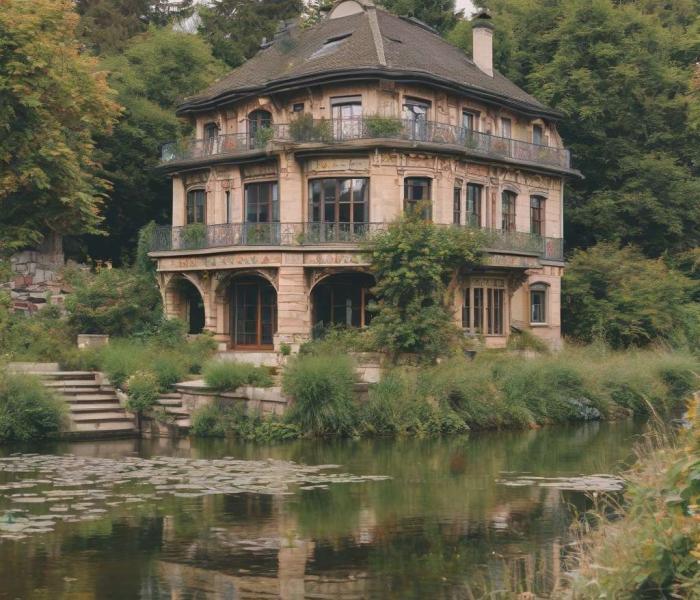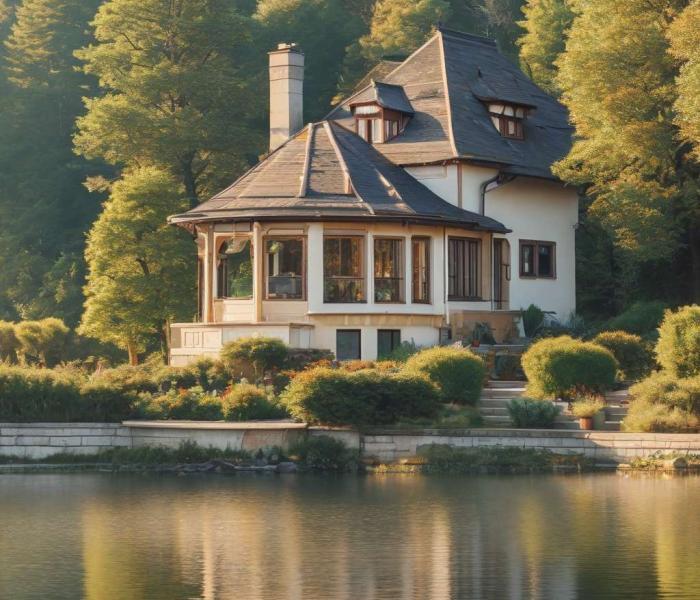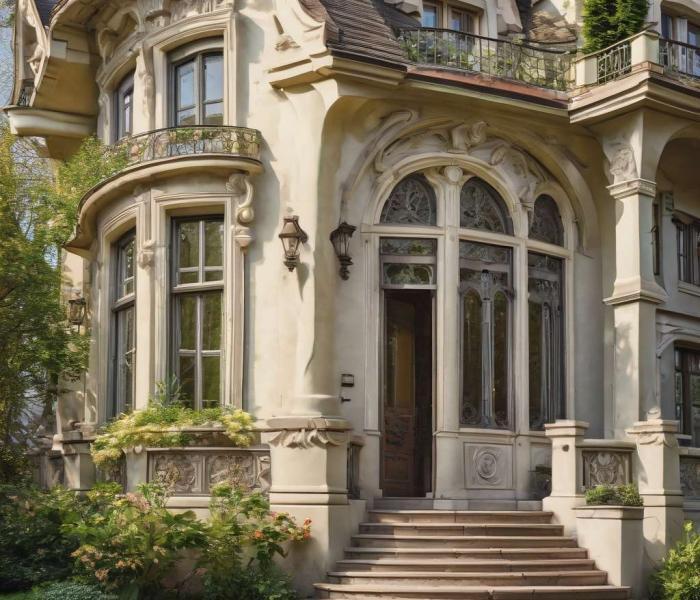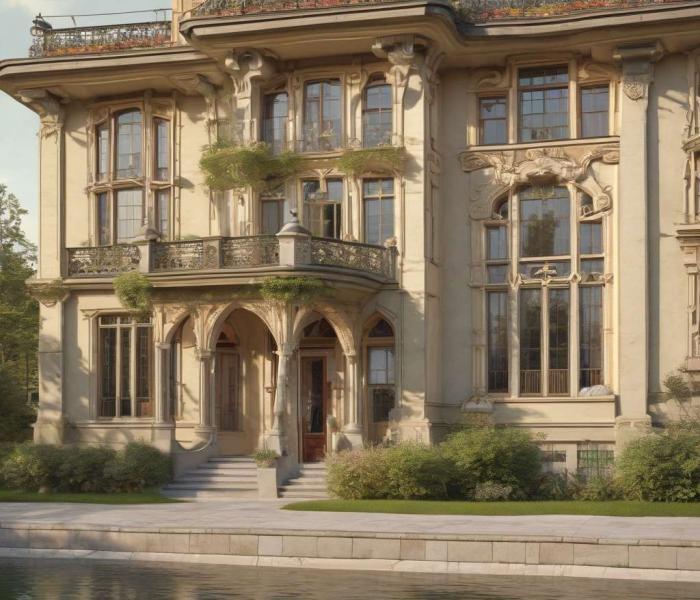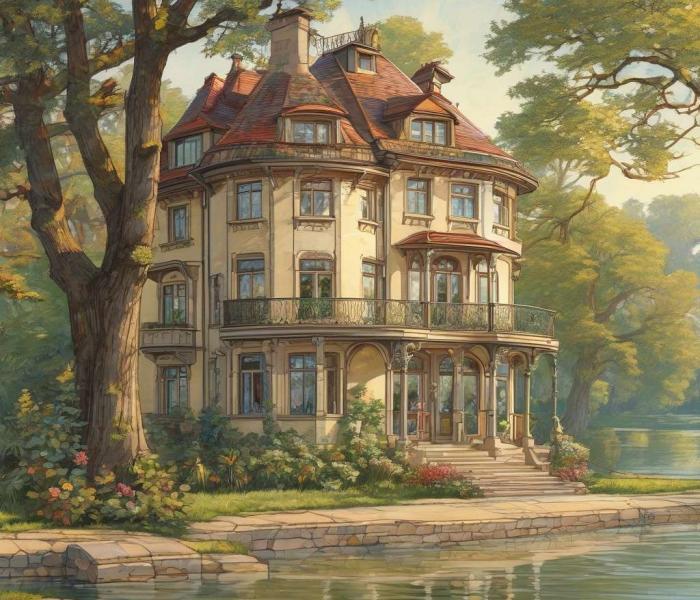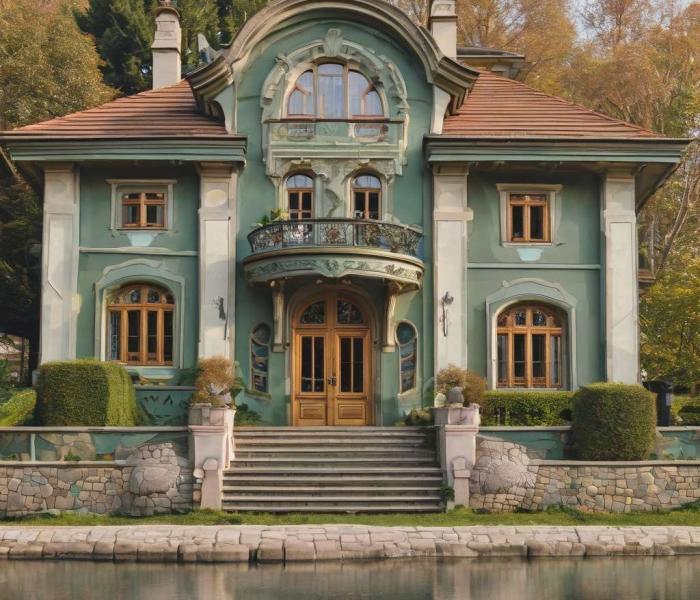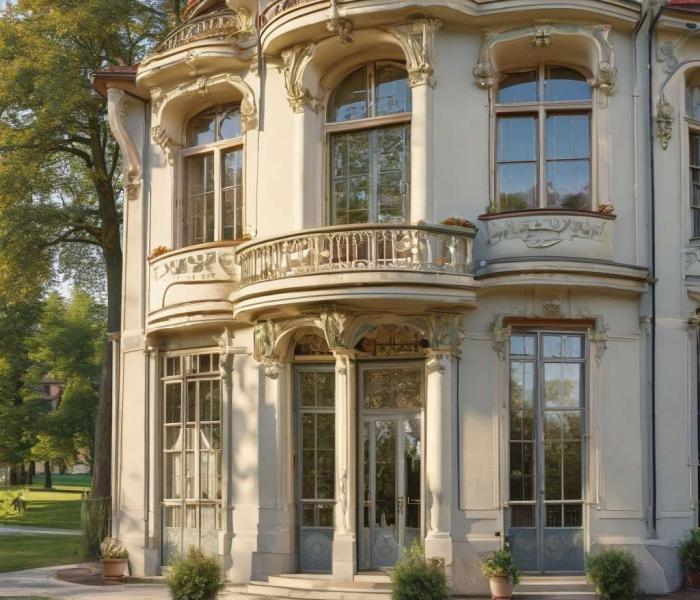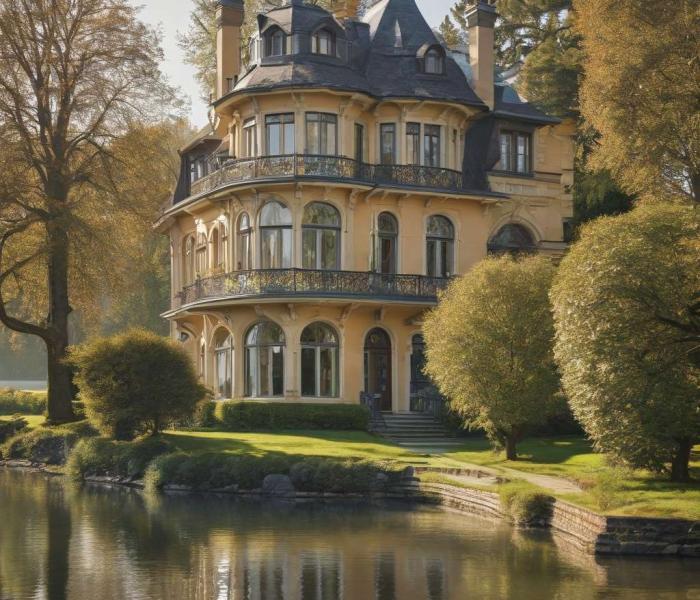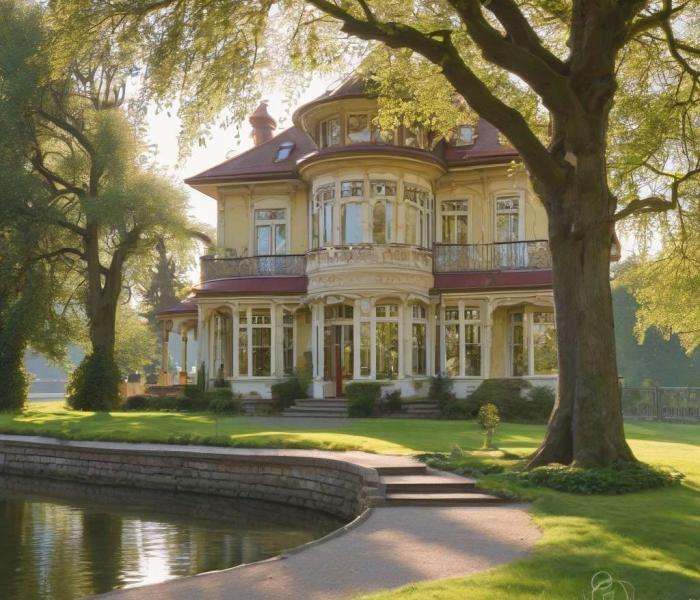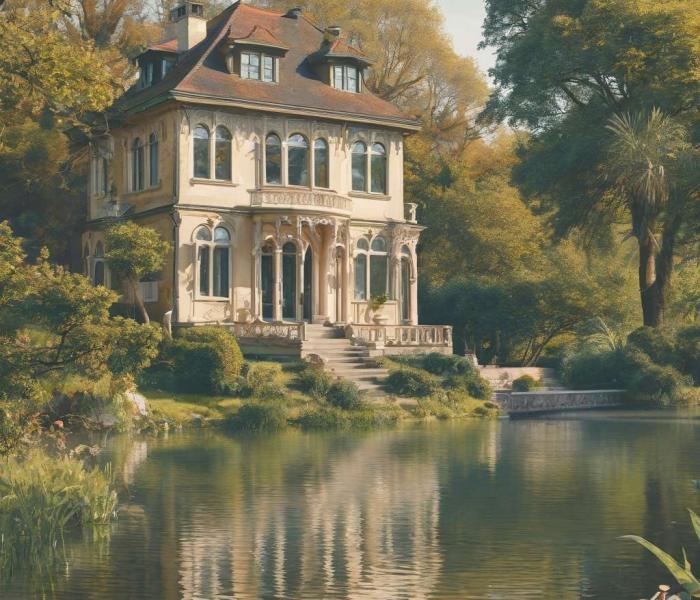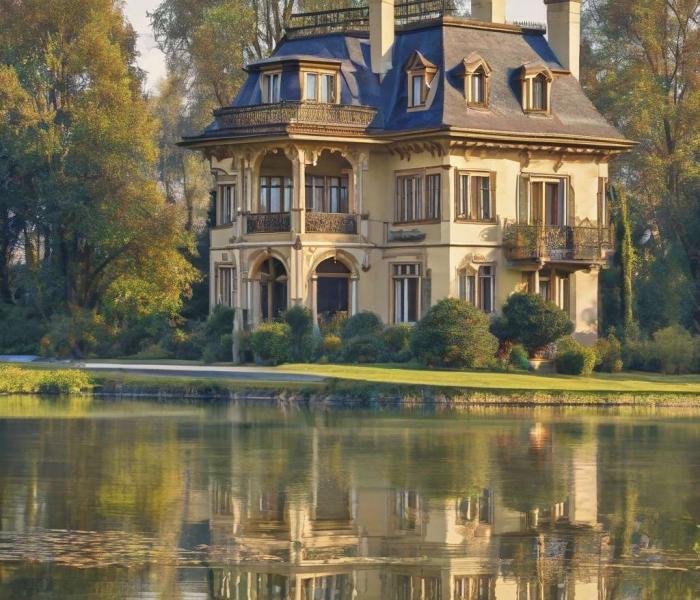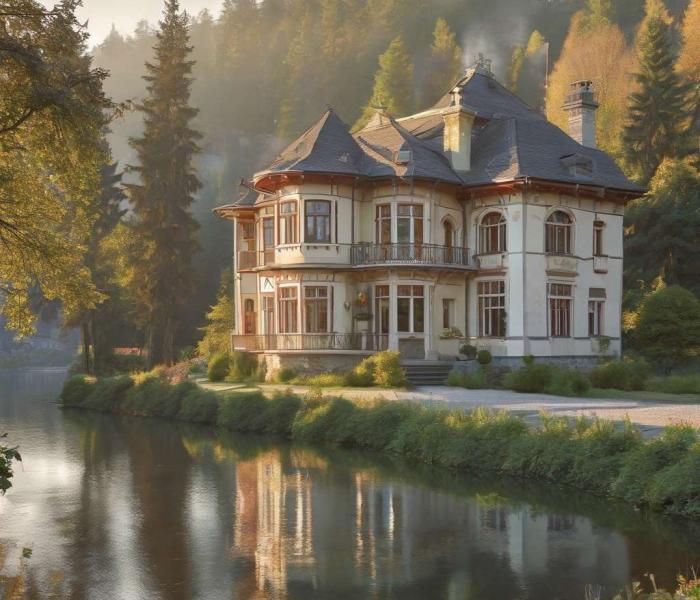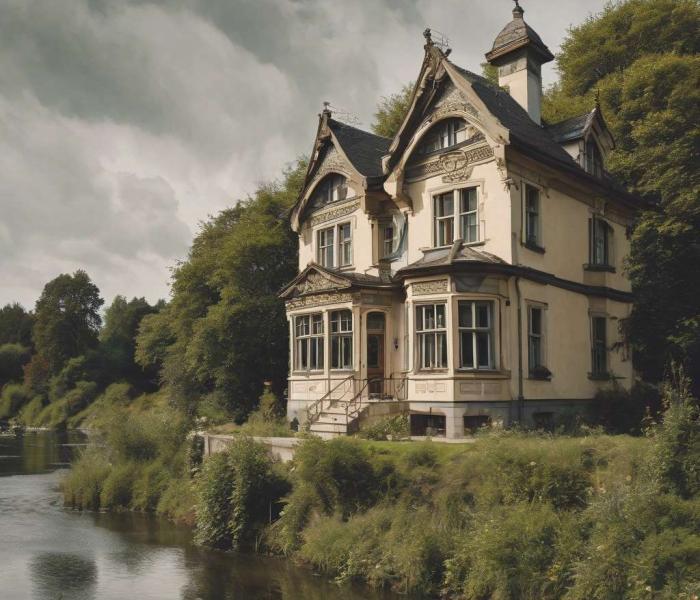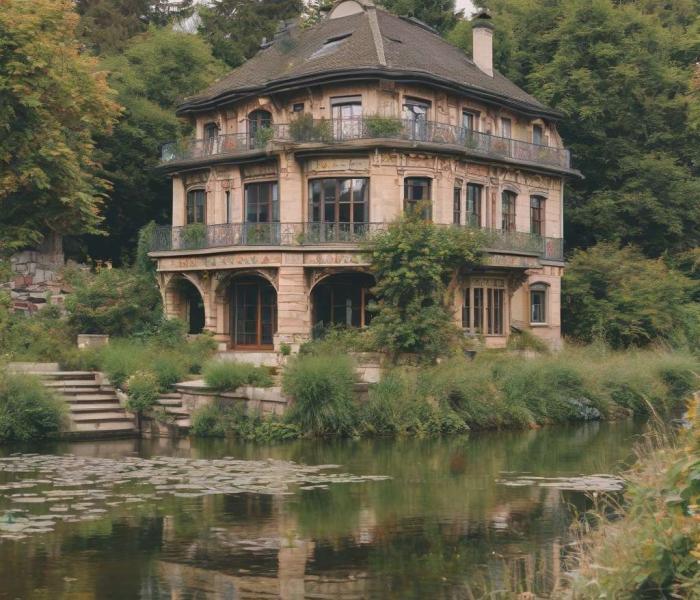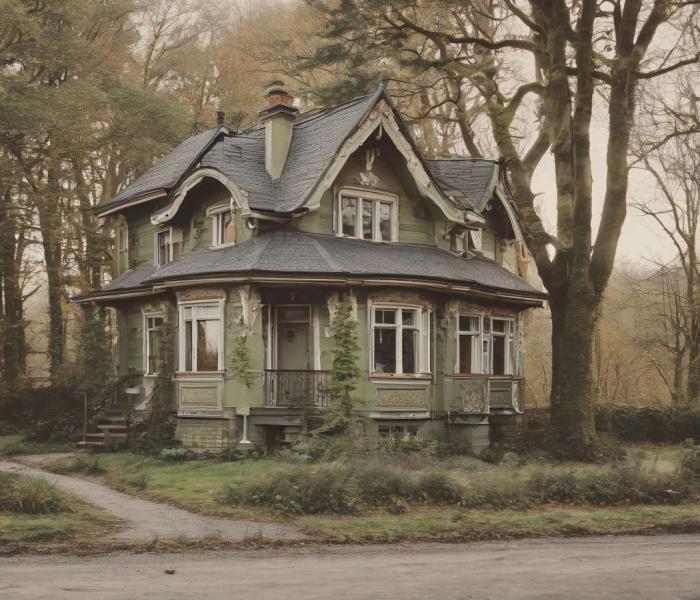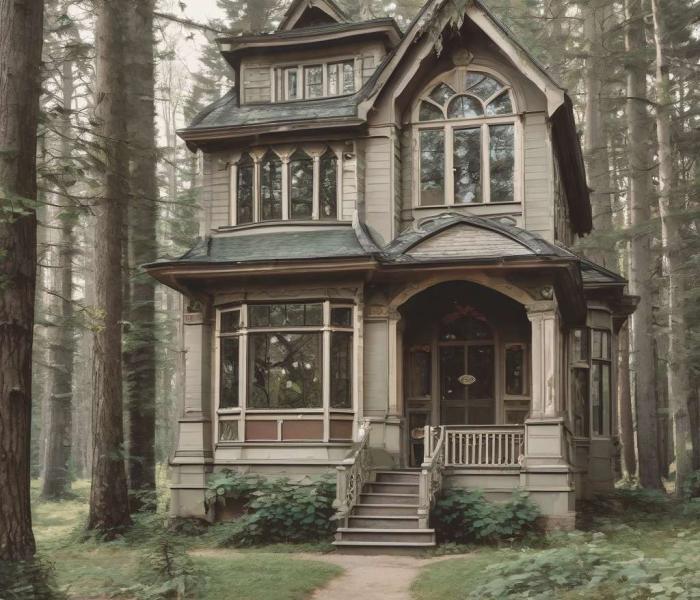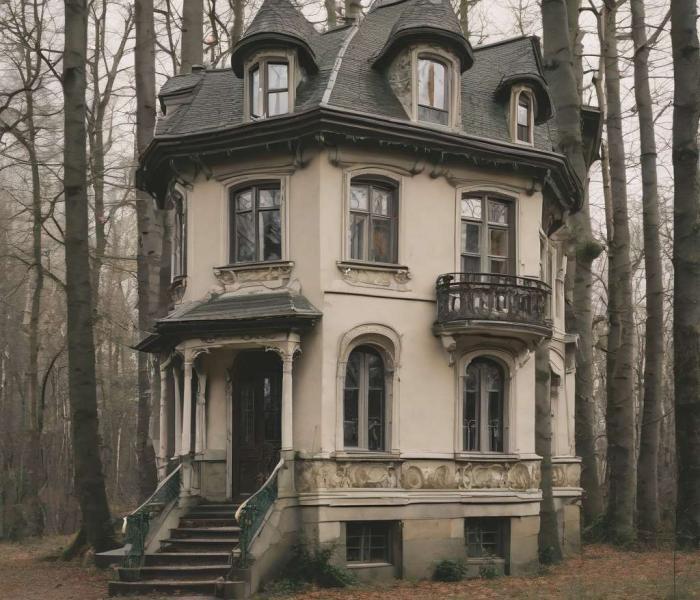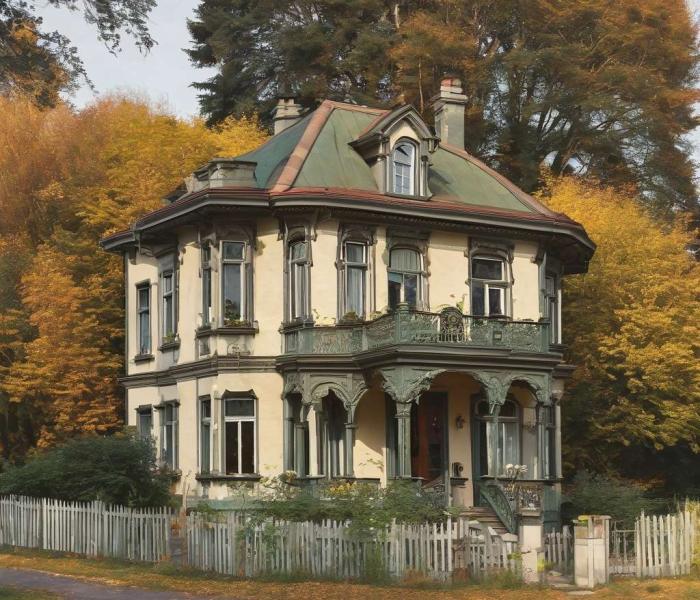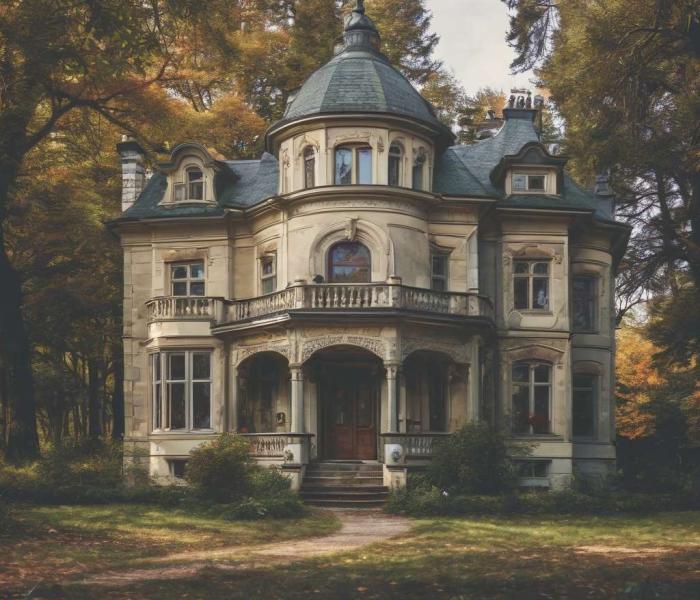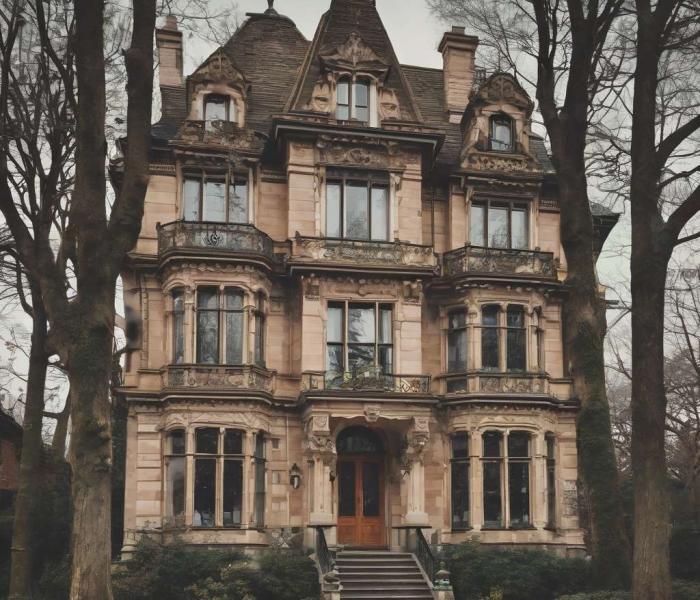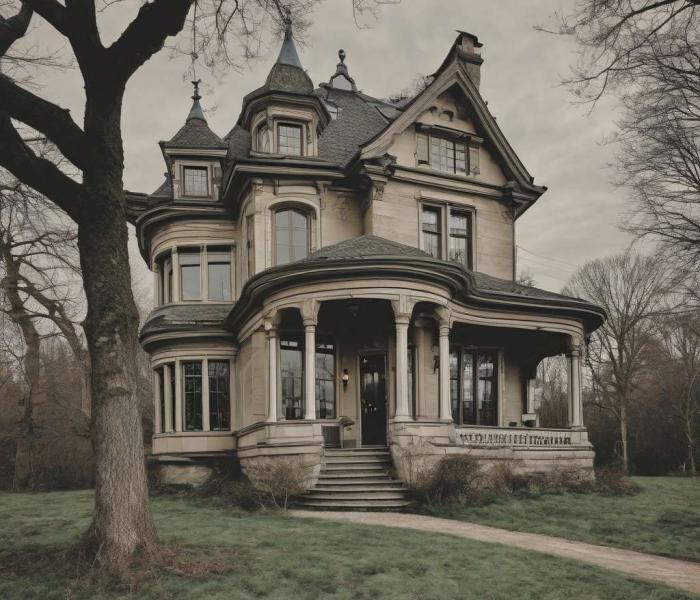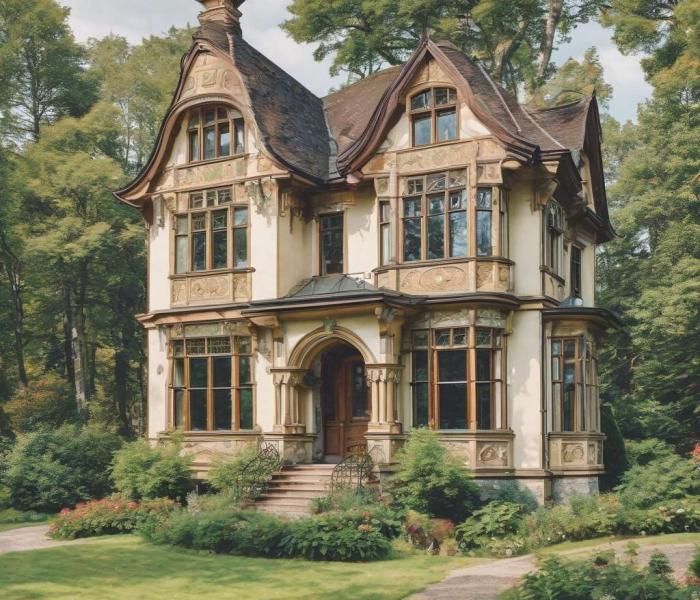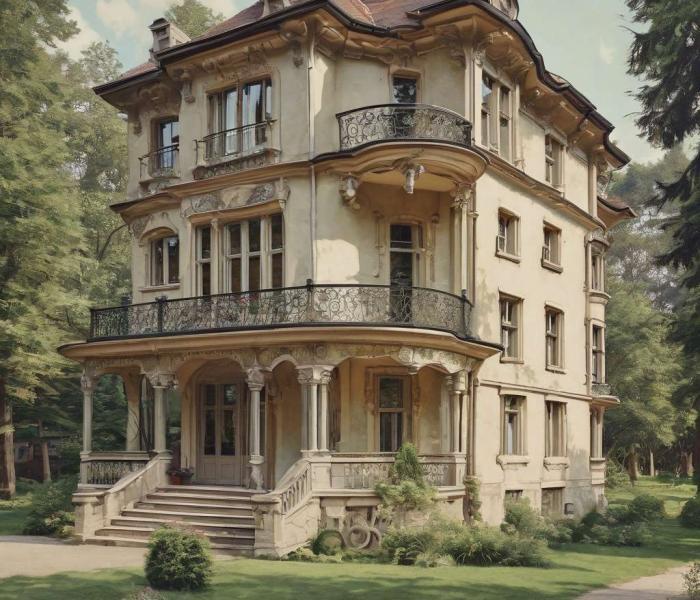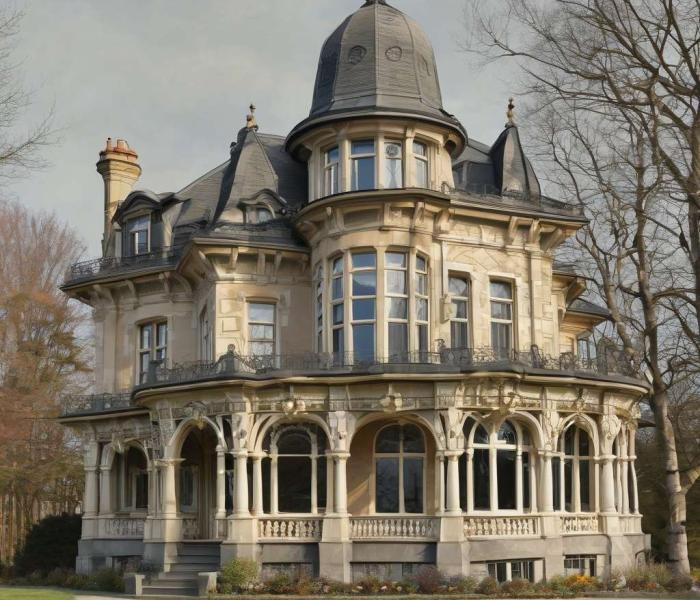AI Based Design
Architecture – Art Nouveau
Art Nouveau, or “New Art,” emerged as a significant architectural style at the turn of the 20th century, spanning from the late 19th century to the early 20th century. This artistic movement, characterized by its ornate and intricate designs, flourished primarily in Europe and North America. Art Nouveau represented a departure from the more rigid styles of the past, embracing a new aesthetic that celebrated natural forms, innovative techniques, and decorative embellishments.
One of the defining features of Art Nouveau architecture is its emphasis on organic shapes and flowing lines. Architects drew inspiration from nature, incorporating elements such as plants, flowers, and vines into their designs. This resulted in buildings with curving facades, sinuous curves, and asymmetrical compositions that seemed to mimic the graceful forms found in the natural world. Rather than adhering to strict geometric patterns, Art Nouveau architects embraced fluidity and movement, giving their structures a sense of vitality and dynamism.
Another hallmark of Art Nouveau architecture is its intricate ornamentation and decorative detail. Architects employed a wide range of materials, including iron, glass, ceramic tiles, and stained glass, to adorn their buildings with elaborate motifs and patterns. These decorative elements often featured motifs drawn from mythology, folklore, and the human form, adding a sense of whimsy and fantasy to the architecture. Facades were adorned with delicate filigree work, intricate mosaics, and sculptural reliefs, creating a sense of opulence and luxury.
Art Nouveau architecture also placed a strong emphasis on the integration of art and craftsmanship. Architects collaborated closely with artisans and craftsmen to create buildings that were not only structurally sound but also aesthetically pleasing in every detail. This interdisciplinary approach resulted in buildings that were works of art in their own right, blurring the boundaries between architecture, design, and decorative arts.
Furthermore, Art Nouveau architecture was often characterized by its innovative use of technology and materials. Architects embraced new construction techniques, such as reinforced concrete and steel frame construction, allowing for greater flexibility in design and the creation of larger, more daring structures. This spirit of experimentation led to the development of innovative building forms, such as the iconic glass-and-iron structures of the Paris Metro entrances designed by Hector Guimard.
Art Nouveau is characterized by several important aspects that define its unique aesthetic and cultural significance:
- Organic Forms and Curvilinear Shapes: Art Nouveau artists and architects drew inspiration from nature, incorporating organic forms such as flowers, plants, and flowing lines into their designs. The movement rejected the strict geometric shapes of previous architectural styles in favor of fluid, curvilinear forms that mirrored the natural world.
- Ornate and Intricate Decoration: Art Nouveau is renowned for its elaborate ornamentation and intricate decorative details. Architects and artists utilized a variety of materials, including wrought iron, stained glass, ceramic tiles, and mosaics, to embellish their creations with ornate motifs and patterns. These decorative elements often featured stylized depictions of natural elements, mythical creatures, and symbolic imagery.
- Asymmetry and Dynamic Composition: Art Nouveau compositions often exhibited asymmetrical arrangements and dynamic compositions, eschewing the symmetry and balance typical of earlier architectural styles. This asymmetry created a sense of movement and vitality, enhancing the overall visual impact of Art Nouveau designs.
- Integration of Art and Craftsmanship: Art Nouveau emphasized the integration of art and craftsmanship, with architects collaborating closely with skilled artisans to create unified, harmonious designs. This interdisciplinary approach resulted in buildings that were not only architecturally significant but also artistically rich, blurring the boundaries between architecture, design, and decorative arts.
- Innovative Use of Materials and Technology: Art Nouveau architects embraced innovative construction techniques and materials, such as reinforced concrete, cast iron, and glass, to realize their imaginative designs. This experimentation with new materials and technology allowed for greater creative freedom and led to the development of innovative architectural forms.
- Symbolism and Spiritualism: Art Nouveau was often imbued with symbolism and spiritualism, drawing inspiration from mystical and esoteric sources. Artists sought to evoke emotional and spiritual responses in viewers, infusing their designs with symbolic motifs and allegorical themes that reflected the broader cultural and philosophical currents of the time.
- Global Influence and Adaptation: While Art Nouveau initially flourished in Europe, particularly in cities like Paris, Brussels, and Vienna, it quickly spread to other parts of the world, including North America and Asia. Each region adapted the Art Nouveau style to its own cultural and architectural traditions, resulting in diverse interpretations and variations of the movement.
While Art Nouveau architecture reached its peak popularity in the late 19th and early 20th centuries, its influence can still be seen in cities around the world today. Many Art Nouveau buildings have been preserved as architectural landmarks, celebrated for their beauty, creativity, and historical significance. From the whimsical curves of Antoni Gaudí’s Casa Batlló in Barcelona to the intricate ironwork of Victor Horta’s Hôtel Tassel in Brussels, Art Nouveau architecture continues to captivate and inspire audiences with its timeless elegance and innovative spirit.
